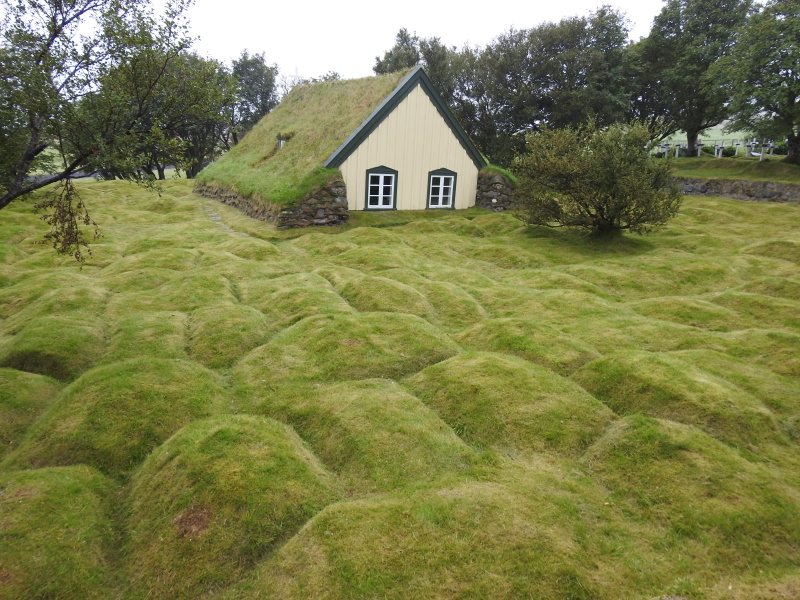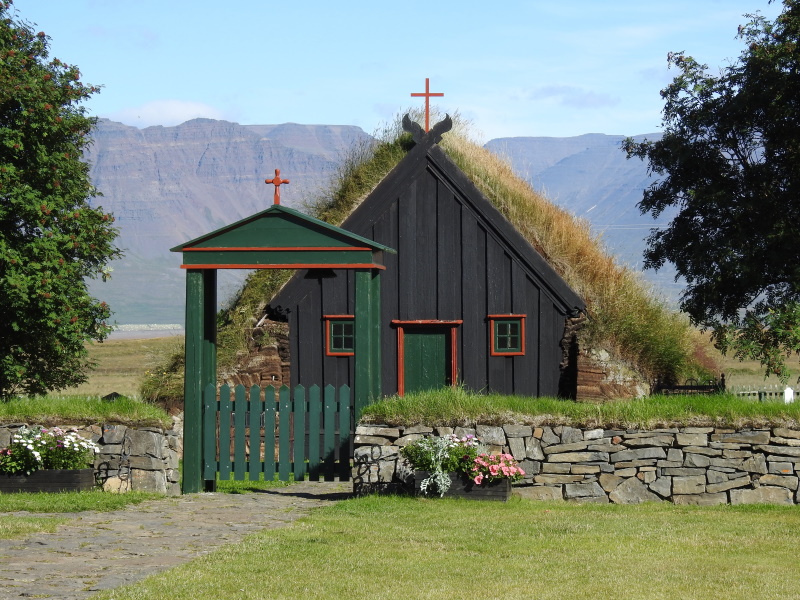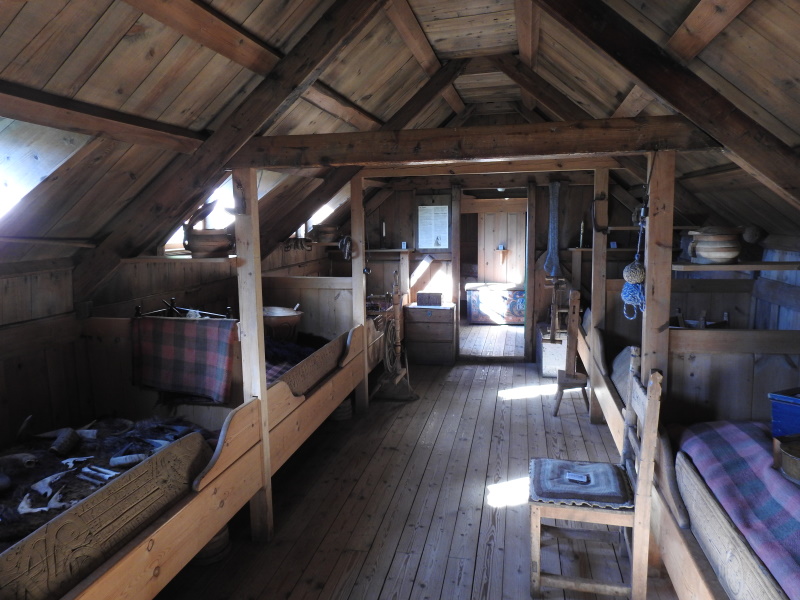Blog TWHS Visits
Icelandic Turf House Tradition
Iceland isn’t a country to visit for its rich cultural heritage. It has Thingvellir as a cultural WHS, but that’s a cultural landscape with mostly intangible features. The capital Reykjavik has some modernist constructions of interest (the Hallgrímskirkja, several art museums and sculptures), but the rest of the country was quite poor and isolated until the beginning of the 20th century. A reminder of those times lies in the Turf House Tradition, a series of 14 locations on the Tentative List.
Most of those 14 properties lie close to the Ring Road. During my first attempt I was confronted with a closed gate at Keldur after driving 4 km on an unpaved road, so I decided to be more picky with the others as not all are welcoming tourists.
The first satisfying one lies 15 kilometers east of Skaftafell: the turf church Hofskirkja. It is the village church of the hamlet of Hof. This turf-roofed church, which is still in use, was built at the end of the 19th century. It is set in the middle of a contemporary cemetery, which is perhaps even more interesting than the church itself. Each grave lies beneath a small grassy mound.
My other visits are from the north of Iceland. The peat church Víðimýrarkirkja for example: its black-and-red exterior is the most beautiful of the series. It is accessible for most of the day, the caretaker seems to live next to it and he opened the church when he saw me and another couple arriving. There is an entrance fee of 1000 crowns (6 EUR), for which you also get a brochure in English. It's small and cramped inside: there are a few benches and an altar; the only decoration consists of the wooden carvings.
It was already getting late and I doubted whether to visit the turf farm Glaumbaer about 8 kilometers away. Fortunately I did, as I found it the most illuminating one on how the turf farms functioned. This site is also open to visitors and there were dozens of them present when I was there. A fee of 1,700 crowns (10 EUR) is charged. It is a large farm, consisting of 13 linked "houses" (rooms). They were made of a combination of turf, stones in a herringbone pattern and wood. Some of the houses date from the 18th century, the rest from the 19th.
If you'd want to spend time / money on only one interior, choose this one: it has one long corridor to which all rooms / houses are connected. It is very dark inside and it stays warm even in the winter. Each room had a specific function (storage space, kitchen etc) and the sleeping area could accommodate 22 people in 11 beds shared by 2 persons each.
This TWHS has a 100% thumbs up score from the 7 visitors so far and I’d wholeheartedly support that. The turf ‘houses’ are very fine pieces of vernacular architecture, which is a gap on the List. The site description on the UNESCO website is very elaborate, so the Icelanders must be preparing something….
Els - 13 September 2020


